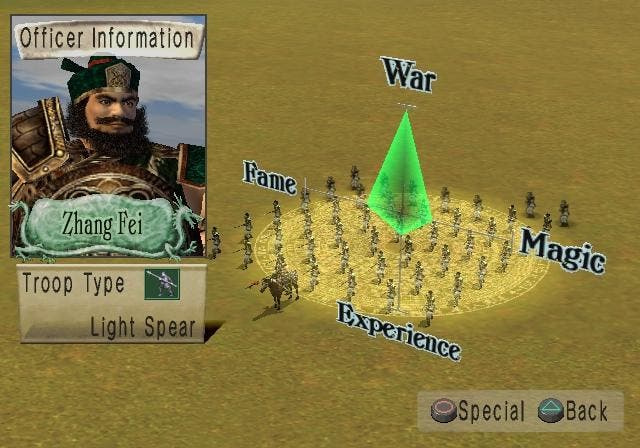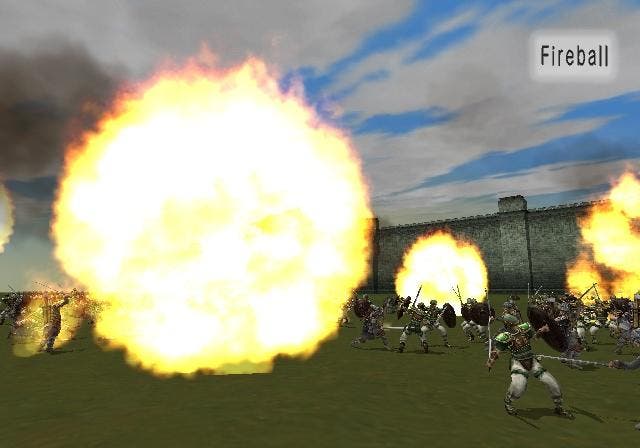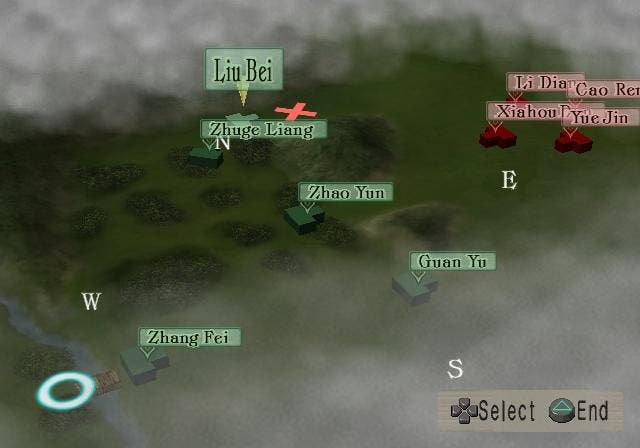Kessen II
Review - an epic strategy game, oriental style

Stranger By The Minute
Kessen II is the latest in a seemingly endless succession of Koei games (very) loosely based on the Three Kingdoms period of Chinese history. This was a time of war and chaos, with the Han dynasty in ruins and the rival kingdoms of Wu, Shu and Wei battling it out for supremacy.
Any similarity to persons living or dead is purely coincidental though - Kessen II is about as historically accurate as Crouching Tiger, but in its own strange way just as much fun. Playing as the Shu leader Liu Bei, you must lead your armies to victory in a series of massive battles against the tyrant Cao Cao. Along the way the plot has more twists and turns than your average soap opera, with generals switching sides, alliances being forged and broken, new armies appearing just in the nick of time, and spectacular magical attacks carrying the day.
The characters themselves are reduced to caricatures, but like the costumes they wear they're colourful and distincitive. Lui Bei (in reality a middle aged general) comes across as a typical Final Fantasy style whining teenager, who leads his people to war because Cao Cao kidnapped a dancing girl he fancied. His sworn brother Zhang Fei is a brave but drunken fool with a tendency to bite off more than he can chew, while many of his generals are buxom young ladies who act like giddy schoolgirls most of the time. Luckily the sheer silliness pervading the whole game makes it a joy to play, with the sometimes frankly surreal cutscenes either carrying the story forwards or simply leaving you staring at the screen in utter disbelief.

Spoilt For Choice
It might all sound a little bewildering, but in stark contrast to Koei's impenetrable Dynasty Warriors III, here the plot actually makes some kind of warped sense. New characters are introduced gradually throughout the campaign, and a helpful voice-over explains what's going on between battles as your armies advance and retreat across a big map of China.
A similar approach is taken to introducing you to the game's tactical possibilities, with more complex unit formations and spectacular new spells being unlocked as your generals gain experience from one battle to the next. While you can comfortably win the earlier battles without worrying too much about what formation each of your units is in, magic plays a vital role right from the start, and knowing how and where to use it is the key to winning a battle.
Generals have special abilities which vary from simply firing a volley of arrows or leading a charge through the enemy to disrupt their ranks to awe inspiring elemental attacks that can severely demoralize your foe. Giant balls of fire fall from the sky and bounce through a fight, fissures open up in the ground and swallow anybody in their path, and tornados sweep across the battlefield sucking up enemy troops and then dropping their remains from a great height. The results are always a joy to behold, and can often sway the course of a battle.

Tactics 101
Before you can unleash lightning storms and meteor showers on your foe, you must first find and engage them. Battles begin with a war council where your generals will offer you one or more plans. Sometimes it's simply a case of deciding who stays behind to defend the storehouse, other times you have wildly differing plans to choose from, with the opportunity to set an ambush, lay mines or take advantage of terrain.
Once you've selected a plan your units are lined up accordingly on the battlefield, but although they start out with preset orders dictated by your choice of battle plan, you can interrupt at any point to discard or adjust your plan from the battle map. Here you can view the lay of the land and the locations of your own units and any enemy forces within your sight, using a simple interface that looks like something from a History Channel documentary. Individual units can be given new destinations using the D-pad. If the destination is another friendly unit they will support it. If it's an enemy unit, they will attack it. And that's about as complex as it gets.
The interface and controls might be rather basic, but there's plenty of room for crafty tactics as you try to gang up on stray units and stop the enemy from bringing his whole army into play. Terrain features such as hills, mountains, forests and bridges can be used to your advantage, and in some missions you even get to fight from boats in river battles, or besiege cities using battering rams to knock down the vast gates and ladders to clamber over the towering walls. Others include storehouses which replenish the special abilities of nearby generals more rapidly, and conversely destroying your enemy's supplies can dent their will to fight.

Down In It
While you're looking at the 2D battle map the game is paused, so once you have laid your plans you need to switch back to the 3D viewpoint before anything will actually happen. Here you can trail any of your units as they run around, kicking up little clouds of dust as their horses gallop over the grass.
The real fun begins when one of your armies comes into contact with an enemy force, at which point you can either sit back and watch hundreds of tiny soldiers swarm over each other, or take direct control over one of that unit's hero characters and ride through the battle, leading charges and picking the right time to unleash a devestating spell or special ability. The ultimate goal is to reduce either the manpower or the morale of your enemy to zero, at which point their leader will flee and you can move your unit on to fight somebody else. Both statistics are conveniently listed at the top of the screen alongside your own so that you can see how the fight is going at a glance.
Once the enemy's leading general is forced to flee the battle is yours. Before the next battle you will have more choices to make though, such as whether to train your existing troops, hunt down a man-eating tiger or try to recruit a wavering enemy general. Later on in the game you will often have to split your troops as well, with a choice of which battle you want to lead personally. The campaign might be essentially linear, but you won't necessarily fight the same battles every time you play, and the wealth of battle plans, tactical opportunities, strategic choices and special abilities on offer gives plenty of replay value.
Conclusion
Kessen II might not be the most complex or challenging strategy game we've ever seen, but with a mixture of colourful graphics and easy to pick up gameplay it's perhaps a perfect fit for the PlayStation 2. Yes, the dialogue is exceptionally cheesy, the translations not always very good, and the cutscenes at times bizarre, but it's an entertaining and strangely involving game.

